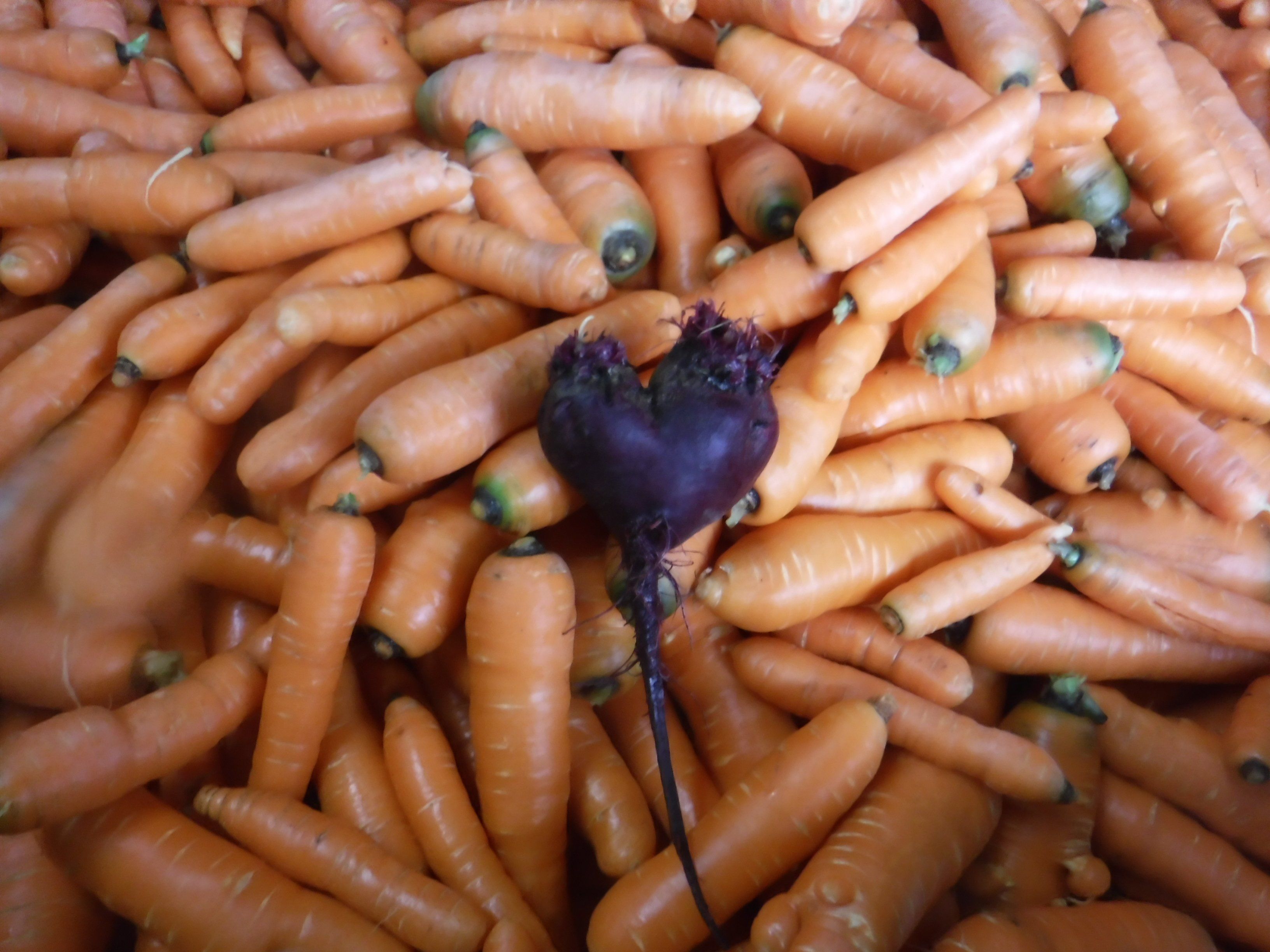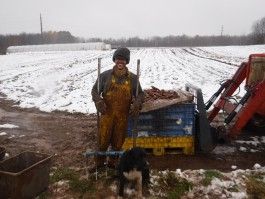Whew. It's been one heck of a week, that's for sure. Crawling through mud, rain, and snow wears a farmer out, there's no way around it. But when you feel the ground starting to freeze in places and there's still carrots left to dig, a sense of urgency over-rules your more sensible desire to seek warmth and rest....
Keep. Harvesting. Carrots.

Farmers Eric, Ryan, and I put in some long, cold, wet days this week, and yesterday at 5 we finished harvesting the last bin of the carrots. Today, we're picking the last of the beets and brussels sprouts as well - both destined for the root cellar, joining the cabbage and carrots. Then we can officially put the outside fields to rest, and turn our focus to washing all of these roots in the pack shed (with a heater!) and to hoophouse crops like spinach and other hardy greens.
Every fall, we dance with the cold. Some years, the temps drop so fast that no matter our best efforts, we can't get all of the carrots out of the ground. When that happens, part of our winter carrot crop gets frozen in the ground, a tithe to the mighty force that is Winter. Other years, it's so warm for so long that our root cellar is not cold enough to store vegetables in, and we have to delay harvest until the cold begins to bring cellar temps down enough for proper storage.

A few years ago, we purchased a late 1960's model mechanical root harvester to help us race the cold and get these fall carrots harvested quickly. When conditions are good, this old harvester can harvest over 1000# of carrots per hour, which would make quick work of our "big" carrot harvest for winter storage. An old timer over in Michigan told me once that he used to drive one just like this as a young man, and when everything was humming perfectly they could fill a semi truck every hour!
The way the harvester works is mechanically genius. A plow runs deep under the row, loosening the carrots (or beets - it works on a variety of root crops.) Then, the leaves of the plant are grabbed between a pair of belts that lift the crop out of the ground. Next, the tops are clipped off by a set of topping bars, and the crop falls down onto a conveyor, eventually running out and up into bins being pulled by a tractor or truck running along side of it. It's quite a sight to see.
Unfortunately, the year we got it was the only year we have been able to actually USE it on our storage carrot crop (note the lack of mud in the picture above!) Ever since then, something has not cooperated. One year, the deer ate down all the tops, so there was nothing for the belts to grab to lift the carrots out of the ground. Another year, an early snowfall - heavy and wet - pushed the tops down too far for the belts to reach. But most years in the fall, it has been simply too wet to get heavy machinery into the fields to pull the harvester, let alone to pull a wagon beside the machine filled with thousands of pounds of carrots in bins. Last year was yet another too-wet fall, and since we were hand harvesting the carrots more often than not, we decided to park the mechanical harvester and just PLAN to hand harvest the storage carrots this year.
If we were hand harvesting the crop, we could plant more densely, saving space and time spent hand weeding, as the harvester requires a wider spaced row in order to "fit." And I think it was a good decision, as the early heavy snowfall and wet conditions this year would have ruled out mechanical harvest anyway. It's too bad - that harvester can make a week's worth of work happen in a DAY (with warm hands to boot!) but it appears that mechanical harvest is just not in the cards for us.
So, we adapt and overcome. This season, in addition to changing the crop spacing, we trimmed down the overall size of the late carrot planting substantially to better facilitate the hard work of hand harvest. In the past, we have grown a big field of winter carrots and offered them wholesale to food coops and restaurants through the winter, but this year we grew only enough to supply your winter CSA boxes. A smaller planting is a better fit with our rush to get crops safely stored away before winter arrives, and less headache than trying to hand harvest a large planting designed to be mechanically harvested before the ground freezes.
Well, that's it for this week. I am looking forward to recharging my batteries this weekend inside a warm house by the fire! Stay warm, stay safe, and take care of one another.
In community,
Farmer Chris
Great Oak Farm




